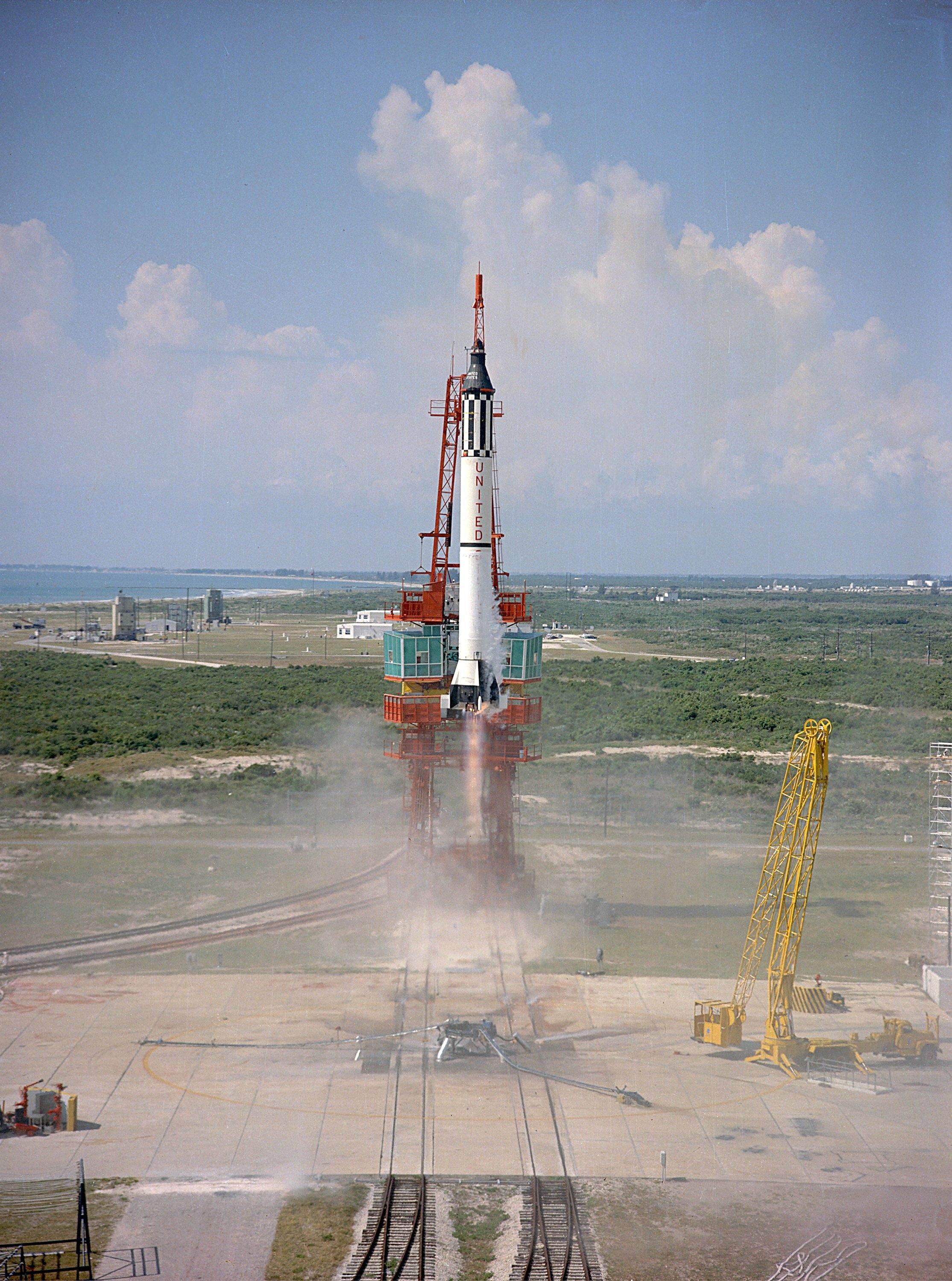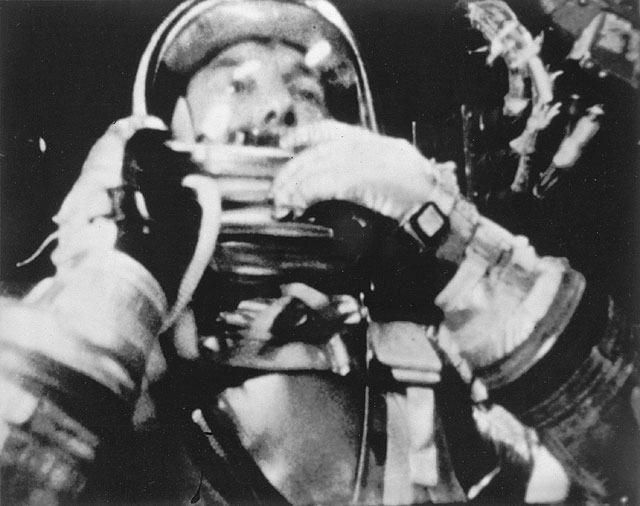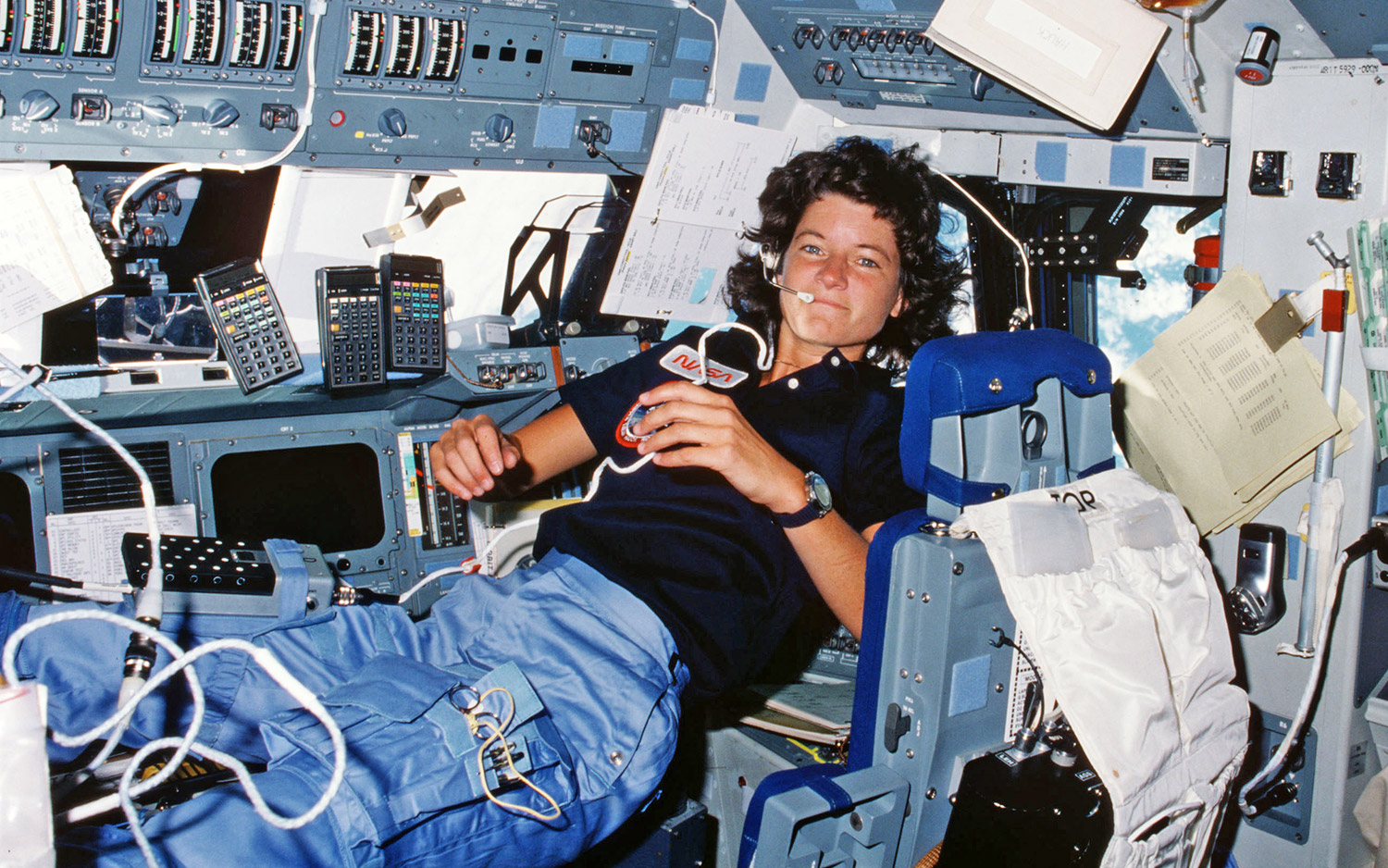US spaceflight at 60: A lot has changed since NASA's 1st crewed mission
Alan Shepard lifted off 60 years ago today.

It was 60 years ago today that the United States' first spaceflyer urged nervous flight controllers to ''fix your little problem and light this candle" to send him into space.
Mercury astronaut Alan Shepard successfully completed a 15-minute, 28-second mission on May 5, 1961, becoming only the second person to achieve spaceflight after the Soviet Union's Yuri Gagarin just three weeks before.
Shepard's liftoff was a controversial moment for some in media and politics, who saw the U.S. competing in a "space race" with the Soviet Union for technological supremacy in the eyes of the world. Critics pointed out that Shepard flew a shorter, suborbital flight compared to Gagarin's orbital mission, and some said that NASA was too cautious in ordering one last chimpanzee flight before approving Mercury for human spaceflight — a safety-driven decision that meant Gagarin flew first.
In photos: Freedom 7, America's 1st Human Spaceflight
But in a 1998 interview with NASA discussing the events just before he climbed aboard the Redstone rocket, Shepard — who was frustrated at flying second — still recalled a feeling of awe at what the agency was about to do. "I looked back and up at this beautiful rocket, and thought, 'Well, OK, buster, let's go and get the job done.' So I sort of stopped and kicked the tires, then went on in, and on with the countdown," recalled the naval aviator and test pilot, who died in 1998 at age 74.
The ensuing decades have seen a lot of changes in spaceflight, especially in terms of diversity. To be sure, we aren't anywhere near representing the plurality of folks living on planet Earth, and China operates its human spaceflight program separately from other countries due to international security concerns.
That said, we've come a long way since the early days of NASA's human spaceflight program, when nearly all astronauts were white men with a test-pilot background. Nowadays, people of different genders, sexualities, nations and ethnicities can fly to space today; 19 countries alone have visited the International Space Station (ISS), a project made possible by years of international collaborations on programs such as Apollo-Soyuz, the space shuttle and Russia's Mir space station. In fact, U.S. President John F. Kennedy floated tentative ideas of Soviet collaboration in June 1961, just weeks after Shepard's flight.
Get the Space.com Newsletter
Breaking space news, the latest updates on rocket launches, skywatching events and more!
Related: Could the US have won the Cold War space race?

While Shepard's flight took place in a very different era, it still holds valuable lessons learned for today's space program, Brian Odom, acting NASA chief historian, told Space.com.
"These guys, the Mercury 7, they were all kind of this test-pilot mentality, and I think that was good for where they were back then," Odom said. He recalled the phrase "human in the loop" that engineers of the day used to think about when bringing people into spacecraft systems for the first time, which fit in perfectly with test-pilot training when figuring out new aircraft types.
Odom pointed out that the first few NASA astronauts on the Mercury, Gemini, Apollo and Skylab programs were all white males, which largely represented the test pilot corps of the day from which most astronauts came. But he pointed to other aspects of human experience that we still use in space today: running space missions through procedures, simulating problems to assist astronauts with decision-making, and running experiments on the human body to better understand how it responds to space.
Infographic: America's first spaceship: Project Mercury
Today's astronauts and cosmonauts can benefit from the Tracking and Data Relay Satellite network that ferries live video and information from spacecraft and the International Space Station, but back in the day a patchwork of ground stations and ships tracked Shepard's flight. Looking back, Odom said he marvels at how the Mercury program showed that people could operate in space, including by demonstrating engineering skills such as beaming down telemetry using this more limited network.
"Our tools have increased," he said. As an example, he pointed to data advances that have improved the testing (and troubleshooting, after several difficulties were encountered) procedures on NASA's forthcoming Space Launch System rocket, which is scheduled to launch by the end of 2021 on a round-the-moon uncrewed mission.
"We're not living with 1961 equipment, and I think that's . . . the important thing to take into account," Odom said.
'Go somewhere and knock on the door'
"We're not living with 1961 equipment, and I think that's . . . the important thing to take into account," Odom said.
Shuttle astronaut Linda Godwin's space career spans practically the length of the shuttle program, which flew people into space between 1981 and 2011. Unlike the small vehicles that characterized the early days of human spaceflight, the shuttle was a comparatively roomy craft that allowed for a typical seven-person crew to spend two weeks in orbit, even carrying bulky devices like a treadmill and a working toilet. The external payload bay could carry satellites like the Hubble Space Telescope, or temporary modules like Spacelab.
Godwin's first two flights — the STS-37 mission in 1991 and STS-59 in 1996 — were shuttle-only affairs. But things were changing rapidly in the 1990s. She had been hired at NASA in 1980 (and became an astronaut in 1986), a relatively frosty spell of the Cold War. So it was a surprise to her when she got to briefly experience the Mir space station — the latest in a series of Soviet space stations that began in the 1970s — during a visit on STS-76 in 1996.
"It's like going into Earth orbit, but you actually go somewhere [physical] and knock on the door," Godwin told Space.com of seeing Mir.
The shuttle-Mir program that delivered a few NASA astronauts there for long-term stays was an important moment in international relations with the new Russian Federation, allowing the two countries to serve as major partners on ISS. The shuttle also allowed more international spaceflyers to get to orbit, giving dozens of people in Europe, Japan, Canada and other countries the chance to experience spaceflight ahead of long-term station stays. (Prior to using Mir, a few NASA astronauts had used the agency's Skylab space station for multi-month stays, but only a handful of people participated before Skylab deorbited in 1979.)
"When I really take time and add up what was going on, that was a tremendous change," Godwin said. "I wanted to go to space … It was just what I wanted to do, and I'm glad that it also represents a net positive. I mean, some people do complain about the money, but mostly there's a positive spin — it's for the greater good."
Godwin explained that she was fortunate to be in the NASA "bubble" because diversity in international experience, in gender and in ethnicity was largely accepted and embraced during her time there, with officials going so far as to advise astronaut selection committees she sat on to keep these metrics in mind after candidates met initial selection criteria.
Another thing that struck her was a moment on her last mission, STS-108, which went to the very young ISS in December 2001. In between performing a spacewalk and operating the Canadarm, another of Godwin's duties was to transfer a bunch of items to the Raffaello Multi-Purpose Logistics Module (MPLM) to return unneeded things to Earth.
The people at NASA's Mission Control, Godwin explained, "really cared that everything went back exactly where it was supposed to be" because they were sensitive to respecting the shuttle's center of gravity while landing on a runway, like an airplane. "But at the very end I checked everything off, and what was missing was a large piece of foam that had been used in packing," she said. "And it was nowhere to be found."
Godwin said she had heard of crew members losing small items like watches on the shuttle, but this incident showed just how massively big spacecraft had become since Mercury. Every crew member hunted in all the corners for the elusive foam, with no success. "Then after we returned, they opened MPLM up at the Kennedy Space Center — and the first thing they saw was that thing laying on the floor," Godwin recalled with a laugh. "I'm still very perplexed about what happened."
NASA's space shuttle program in pictures: A tribute

Informal mentorship
The first woman in space was the Soviet Union's Valentina Tereshkova, who went aloft in 1963. The first efforts at getting American women in space happened around that same time: William Randolph "Randy" Lovelace, an aerospace physician and head of NASA's committee on life science, secretly hand-picked several women who came to his clinic to perform the same astronaut testing as the Mercury corps.
The group (who were tested as individuals) was first known as the First Lady Astronaut Trainees, or FLATs, and later as the Mercury 13. Lovelace was able to perform the first two phases of testing at his clinic. But the third phase needed to be performed at a military facility, and as NASA had no official plans to fly women into space at that time, the government refused access and the FLAT program was eventually canceled.
Women were first selected as NASA astronauts in 1978, in a class that included Sally Ride. Ride flew on a shuttle mission in 1983, becoming the first American woman in space. (She was also the first known LGBTQ+ person to reach the final frontier. Ride died in 2012, and her obituary revealed that her partner of the last 27 years was a woman, Tam O'Shaughnessy.) We've seen a proliferation of female milestones since, on aspects ranging from mission commanders to an all-woman spacewalk in 2019.
"When NASA selected the first six women astronauts in 1978, it had a huge impact on me as a little girl. It allowed me to never doubt that being an astronaut is something that I, too, could dream of doing," NASA shuttle and space station astronaut Karen Nyberg said, according to the University of North Dakota Aerospace's Twitter account. (Nyberg is an alumna of UND.)
It appears that each generation of women found benefits in learning about — or sometimes speaking with — generations of astronauts or aspiring astronauts before them, including the Mercury 13. A letter that Ride penned to the International Women's Air & Space Museum in 1987 said of the Mercury 13, "Although you were not able to realize your collective goal, your accomplishments demonstrated that women could perform and achieve in space, and helped open the door for those of us who followed."
Happily, opportunities for women in space appear to be accelerating, with NASA working to hire half-female astronaut classes these past few years, and more recently, pledging to put the first woman on the moon during the Artemis program.
"There's lots of opportunities available. I've never seen so much activity for women in space in this past year," Marcy Frumker, a trustee and space advisor for the International Women's Air & Space Museum, told Space.com. "It used to be, for our museum, I'd have something to talk about every couple of years … But lately there has been a smorgasbord of women in space. It's been awesome."
Related: What is NASA's Artemis program?
An entertainment legacy
The Mercury program has left a legacy in many different arenas, including the entertainment industry. Disney Plus' single-season "The Right Stuff" of 2020 (based on a Tom Wolfe book of 1979 and echoing a Hollywood movie of 1983) portrays the first seven astronauts and also features occasional mentions of the Mercury 13.
Another notable entry is "For All Mankind" (2019 to present) of Apple TV+. This alternative-history series follows events after the first moon landing of 1969, but it portrays Mercury astronauts in fiction. An infamous scene in the first episode shows Deke Slayton urging several NASA astronauts to "kick the dog" and otherwise get a program setback out of their system over the weekend. The all-male group elects to dangerously race high-powered cars to a local bar to drunkenly group-sing the Motown hit "What Becomes of the Brokenhearted," beers in hand. It's no wonder that some critics have opined that the show embraces "toxic masculinity."
Today's teenager would experience Mercury as distantly as a typical 30- or 40-something thinks of the Second World War. So when asked by Space.com what's the point of producing these shows about Mercury for a younger audience, documentary maker Tom Jennings had a quick answer: "It's because of three guys: Jeff Bezos, Elon Musk and Richard Branson. You may debate whether you want to thank them or not, but it's the commercialization of space that's going on."
Jennings, who directed the documentary "The Real Right Stuff" to run alongside the Disney Plus fictional series, cited Musk's quest for an electric car and a self-landing rocket as examples that attract teenagers or 20-somethings. "I think it excites younger people … and I think that people who make entertainment, and people like myself who make documentaries, we're benefiting from those guys who are making people excited about space."
Jennings' team tried to find something new about the Mercury astronauts through using resources like astronaut John Glenn's home movies, a rarely used interview with Rene Carpenter (wife of astronaut Scott Carpenter), and other radio and video recordings hardly ever seen in typical archival footage.
One of the things that struck Jennings, upon reviewing the old videos, was how people would stop in their tracks at places like Grand Central Terminal in New York City to watch updates of the first Mercury launches. He said he doubts it would happen again today, even with a Mars landing, although maybe "first contact" with an alien civilization would get folks' attention.
"I think today there is an ambivalence because of all the technology we have," he said. "Whereas, on May 5, 1961, people are like, 'I'm not sure this guy is going to get off the launch pad after all the failures of the rockets that happened beforehand.' So there was the human danger, and also, nobody in the United States had ever done this. It made the world stop, and it literally captured us in a way that few things today can."
NASA's Odom pointed to another thing that would be very different for today's teenagers — understanding the geopolitical side of the Mercury program and how it affected the post-colonial societies of Africa and southeast Asia who were watching the United States and the Soviet Union.
"What appeared at the time to be this existential battle between communism and democracy, and the meaning that these launches took within that context … we just can't apply those today because we don't live in that world," Odom said.
But Odom, who has been doing a lot of reading into the anniversary ahead of May 5 activities by NASA, said he saw a lot of discussion on both the American and Soviet sides about pride in putting their people into space for the first time. "It was something so monumental; a human being was flying around the world for the first time. It was incredible."
Follow Elizabeth Howell on Twitter @howellspace. Follow us on Twitter @Spacedotcom and on Facebook.
Join our Space Forums to keep talking space on the latest missions, night sky and more! And if you have a news tip, correction or comment, let us know at: community@space.com.

Elizabeth Howell (she/her), Ph.D., was a staff writer in the spaceflight channel between 2022 and 2024 specializing in Canadian space news. She was contributing writer for Space.com for 10 years from 2012 to 2024. Elizabeth's reporting includes multiple exclusives with the White House, leading world coverage about a lost-and-found space tomato on the International Space Station, witnessing five human spaceflight launches on two continents, flying parabolic, working inside a spacesuit, and participating in a simulated Mars mission. Her latest book, "Why Am I Taller?" (ECW Press, 2022) is co-written with astronaut Dave Williams.









